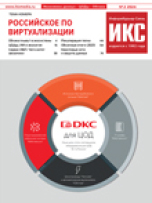| Рубрикатор |  |
 |
| Все новости |  |
World News |  |
 |
LTE will make up 25% of broadband device sales in 2016
| 20 мая 2010 |
WiseHarbor Research revealed some interesting results from its latest mobile broadband devices forecast. The firm predicts that it will be 2016, or five years after the first LTE devices (USB dongles, aircards, etc.) make their debut, before LTE accounts for more than 25 percent of mobile broadband device sales. In addition, the report predicts that it will be 2019 before LTE device sales are equal to CDMA-based technology devices, such as those using EV-DO, and HSPA/HSPA+.
Keith Mallinson, a head of WiseHarbor Research, who is revealing the details of his firm's research at the LTE World Summit in Amsterdam this week, said in an interview with FierceWireless that it will take time for LTE to build a critical mass in the market, and that he believes it will take LTE about 16 years before it reaches its peak, which is the typical maturation time for most technologies.
WiseHarbor's report comes on the heels of AT&T Mobility's announcement earlier this week that it plans to deploy HSPA+ nationwide before it rolls out its LTE network. The carrier expects to cover 250 million people with HSPA+ this year, which will boost the carrier's real-world download speeds from 3.5 Mbps (on HSPA 7.2) to around 7 Mbps (on HSPA+). AT&T executives have said that the HSPA+ deployment will give customers a speedy network to fall back to from LTE, once AT&T deploys that technology. AT&T still plans to deploy LTE in 2011.
Mallinson said that he wasn't surprised by AT&T's announcement and that it's logical for operators such as AT&T to "turbo charge" their UMTS core technology within the existing spectrum band rather than pull it out and put LTE in. "HSPA and HSPA+ will be the dominant technologies for a long while," Mallinson said.
WiseHarbor also predicts that the introduction of TDD version of LTE will deal a severe blow to WiMAX and that WiMAX equipment sales will peak around 2015. "TD-LTE will be fatal to WiMAX," Mallinson said. He added that the reason WiMAX has done so well in the market so far is that it works well in cheaper, unpaired spectrum. However, that edge is being eliminated with the introduction of TD-LTE. "Now there is a clear desire to pursue this TD mode in unpaired spectrum," Mallinson said. "I think it will be pursued aggressively."
Источник: FierceWireless
Читайте также:
Опубликован перечень поручений по итогам заседания Совета по стратегическому развитию и нацпроектам
Решения N3COM прошли тестирование на сети LTE ОАО «РЖД»
МТС начинает отключать старые сети 3G
билайн завершил масштабную модернизацию сети в Московской области
МегаФон импортозаместил связь для экстренных служб и бизнеса

















Оставить свой комментарий:
Комментарии по материалу
Данный материал еще не комментировался.